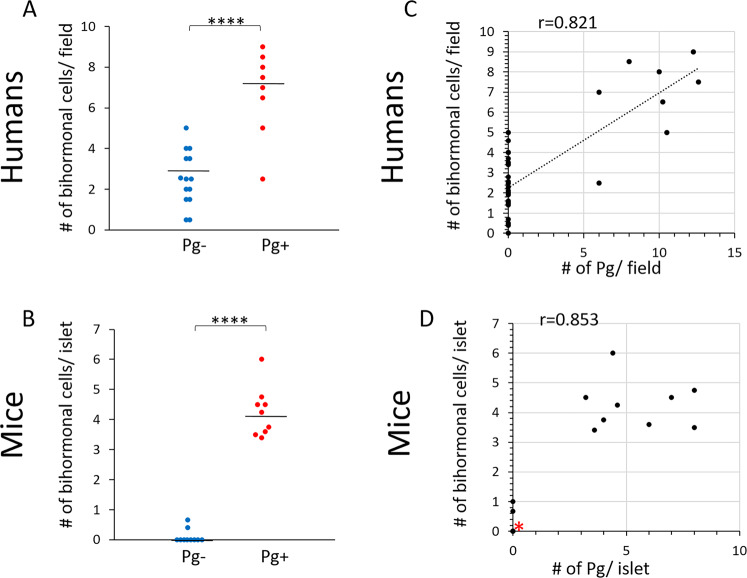Figure 9.
The number of bihormonal cells is significantly higher in pancreatic samples that contain Pg in both humans and mice. A strong correlation exists between the number of Pg/gingipain and emergence of bihormonal cells in both humans and mice. (A,B) Scatter plots showing the number of bihormonal cells/field (400 × 300 μm) in Pg− and Pg+ samples in human post-mortem samples and mice pancreatic islets. Total of 22 human samples and 19 samples from mice were examined. (N = 14 for Pg- and N = 8 for Pg+ for humans and N = 10 for Pg- and N = 9 for Pg+ for mice). Mann-Whitney test indicates ****p < 0.0001 for both humans and mice. (C) Pearson’s correlation analysis showing a strong correlation between the number of Pg and the number of bihormonal cells per field in humans (r = 0.821, ****p < 0.0001). (D) Spearman’s correlation analysis indicates a strong correlation between these two variables in mice (r = 0.853, ****p < 0.0001). 8 samples are overlapping at zero Pg and zero bihormonal cells (red asterisk).

